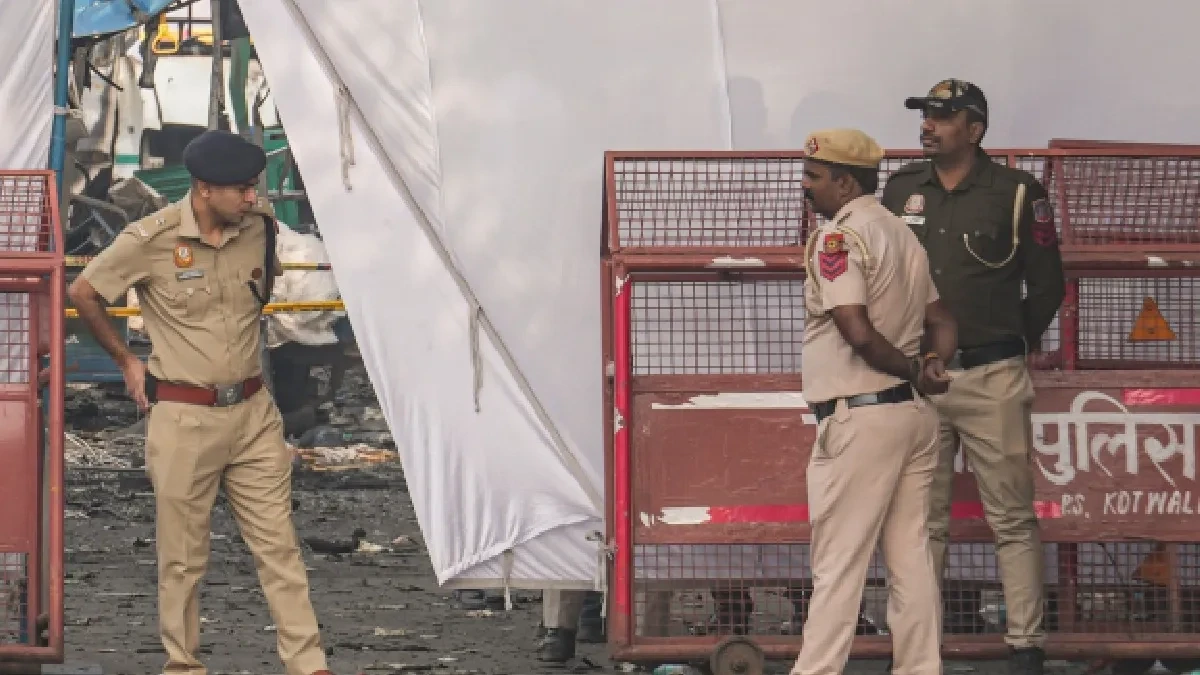It began as a few ominous posters pasted on Srinagar’s walls and ended with a devastating blast near Delhi’s Red Fort that claimed at least ten lives.
What initially appeared to be a local act of provocation in Kashmir soon unfolded into a sophisticated terror network spanning multiple states, involving doctors, clerics, and explosives experts linked to the Pakistan-based Jaish-e-Mohammad (JeM).
Posters in Srinagar Spark First Alarms
On October 18, the Jammu and Kashmir Police were alerted to Urdu posters pasted across Nowgam, a quiet neighborhood on the outskirts of Srinagar. The messages warned of “spectacular attacks” against security forces and non-locals in the Valley. The following day, police registered a case under the Unlawful Activities (Prevention) Act and began scanning CCTV footage, which led to the arrest of three young men.
Their confessions pointed investigators toward Moulvi Irfan, a cleric from Srinagar’s Chanpora area and a known figure in Shopian. “He was a highly radicalized overground operative with affiliation to Jaish and known for indoctrinating young people with his insidious anti-India propaganda and even motivating them to cross over to Pakistan-Occupied Kashmir for training in arms,” said a senior police officer in Kashmir familiar with Irfan’s dossier.
After August 2019, Irfan had kept a low profile, posing as a quiet religious figure. But during interrogation, as another officer put it, “He sang like a canary,” revealing a deeper conspiracy reaching beyond Jammu and Kashmir.
The Trail Leads to Haryana’s Al Falah University
Irfan’s interrogation led police to Adeel Rather, a doctor from Kulgam who had worked at the Government Medical College in Anantnag before taking a position at Al Fatah Medical College in Faridabad. Rather’s arrest in October marked a major breakthrough. He identified another doctor, Muzammil Ganai, who had also shifted from Srinagar to Al Falah University in Haryana.
Ganai was taken into custody on October 30 and confessed to knowing a third doctor, Umar Un Nabi, linked to the same network. Investigators discovered that Ganai also possessed an illegal AK-47 rifle stored in the car of his colleague, Dr Shaheen Shahid. “An initial analysis of the arrested persons’ digital devices shows that they were in touch with their Jaish terror handlers in Pakistan through Telegram platform,” said an officer involved in the case.
The Role of Hafiz Ishtiaq and the Explosives Cache
Both Rather and Ganai named Hafiz Ishtiaq, a cleric who had rented a house in Faridabad and frequently visited Al Fatah College. According to police, Ishtiaq was a key operative responsible for sourcing and storing explosive materials. Acting on their information, authorities conducted raids and seized 2,563 kilograms and 358 kilograms of ammonium nitrate and other chemicals from Ishtiaq and Ganai’s possession.
“The war-like stores of explosives and detonators were meant for a large scale terror strikes,” confirmed a senior investigator, describing the cache as one of the largest recovered in recent years.
The Final Act: Blast Near Red Fort
When police began closing in, investigators believe Dr Umar Un Nabi realized the operation had been compromised. He fled with a quantity of explosives loaded into a vehicle. On November 10, that same car exploded near Delhi’s Red Fort, killing ten people and injuring several others.
By connecting the chain of arrests, digital evidence, and explosive seizures, police now believe the Red Fort blast was the final link in a broader Jaish-backed terror plot that began with a few warning posters in Kashmir and ended with bloodshed in the heart of the capital.
